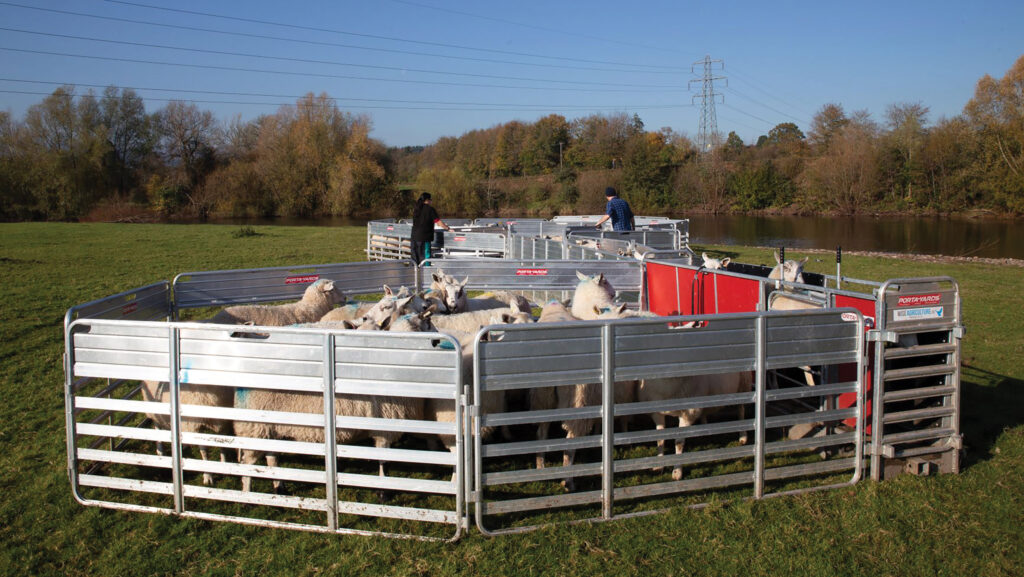6 tips to get best value from a portable sheep yard
 © Wise Agriculture
© Wise Agriculture Efficient use of a mobile sheep-handling yard can help reduce stress and fatigue, and lower fixed costs, benefiting sheep, dogs and staff.
Grant funding has helped more UK farms benefit from the time savings and logistical benefits of such setups.
Farmers Weekly asked Jake Fyfe of New Zealand manufacturer Landquip how to get the most out of what can be a sheep enterprise’s dearest piece of kit.
See also: How to design the best sheep handling system
“Make the best use of your surroundings,” he says.
“Sheep learn a system and will get used to it, but it helps to have something that will work well from the start.” Jake offers the following tips.
1. Take advantage of a slope
Sheep dislike running downhill. They will run on the flat better, and slightly uphill is best.
Take advantage of topography by starting the pen system on lower ground, with each stage of the handling system taking sheep higher.
The advantage is that sheep are kept moving at the ideal walking pace, saving time and hassle.
2. Take advantage of fence lines
A strong fence can be used to run sheep along, freeing up races for other jobs and achieving the optimal angle to funnel sheep.
Sheep run better as a flock along a fence line, reducing the need for dog pressure and almost doubling holding capacity.
3. Use light
Sheep are flight animals always looking for an escape. They do not like the dark. Set the handling area towards the sun or a lighter/brighter area.
A dark area such as a dense wood, a building or somewhere with lots of shadows will not be inviting for sheep.
4. Consider sight lines
Consider carefully what the sheep will see, as sight is their number-one flight-triggering sense (followed by hearing and then smell).
A good handling facility will see sheep run through without pressure into a drafting or dosing race.
Blanking panels can reduce distractions to the side and keep sheep focused on the open, light space ahead or the sheep in front of them.
5. Take advantage of follower instinct
Sheep do not want to lose sight of leading sheep ahead of them, so they will follow them round a corner.
If there is a kink or a blind corner in the lead-up race, assess how this can be used to advantage.
6. Observe and react
Watch how sheep progress through the pen. Is there a section where sheep can turn their heads?
If this is the case, could the width of the pen be narrower?
What can better handling save?
Businesses paying staff to work sheep require efficient handling to save on labour costs.
Those without employees can also benefit by freeing time for other enterprises, repairs, infrastructural improvements or office work.
- Based on two projects (Teagasc and AHDB), a suboptimal handling system can cost up to an hour a ewe a year. In one study, farmers saved 5.1 hours a livestock unit (in this case, six sheep).
- Based on a farm labour rate of £14/hour, a 500-head flock can save 425 hours/year = £5,950
- A 1,000-head flock can save 850 hours/year, or £11,900. This is enough to pay for a handling system.
Cost of bruising
Sheep, and particularly young lambs, bruise easily, leading to wasteful trimming and even partial carcass condemnation.
A low-stress handling system set up well can minimise this bruising.
Jake was speaking at a Wise Agriculture farm efficiency open day at Darlington Farmers Auction Mart.
